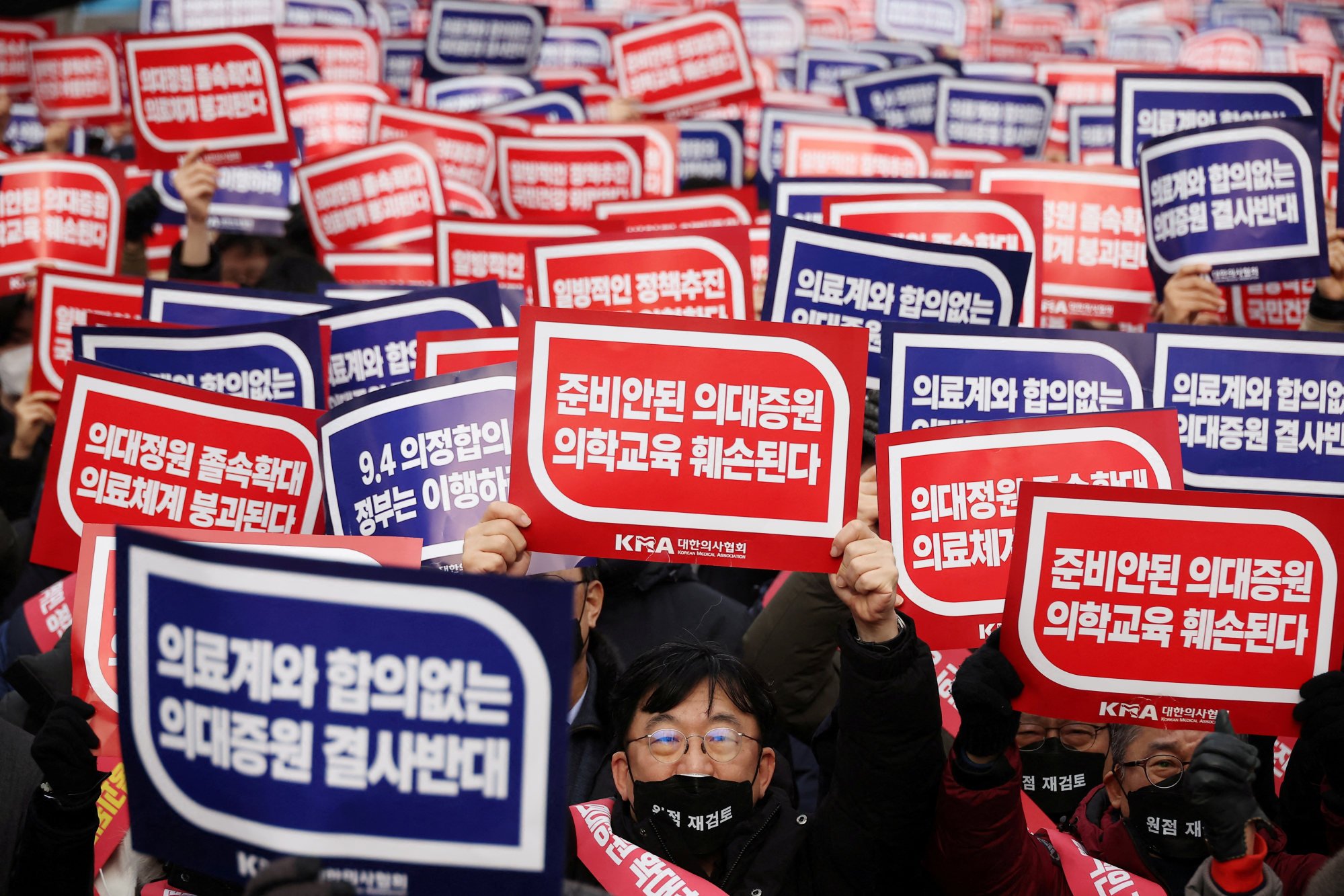Officials say they want to raise the yearly medical school cap by 2,000 from the current 3,058 to create more doctors to deal with the country’s rapidly ageing population.

Doctors counter that schools can’t handle such an abrupt increase in students and that it would eventually hurt the country’s medical services.
But critics say doctors, one of the best-paid professions in South Korea, are simply worried that the supply of more doctors would result in lower future incomes.
South Korean doctor’s death piles pressure on overwhelmed healthcare system
South Korean doctor’s death piles pressure on overwhelmed healthcare system
Public surveys show that a majority of South Koreans support the government’s push to create more doctors.
But observers say many people are increasingly fed up with the protracted confrontation between the government and doctors, threatening to deal a blow to governing party candidates ahead of next week’s parliamentary elections.
In a nationally televised address, President Yoon Suk-yeol said adding 2,000 medical students is the minimum increase needed to address a shortage of physicians in rural areas, the military and essential but low-paying professions like paediatrics and emergency departments.
Yoon said South Korea’s doctor-to-patient ratio – 2.1 physicians per 1,000 people – is far below the average of 3.7 in the developed world.
“Increasing the number of doctors is a state project that we can’t further delay,” Yoon said.
Yoon urged the striking doctors to return to work, saying they have a responsibility to protect people’s lives in line with the local medical law.

He also said the government remains open to talks if doctors come up with a unified proposal that adequately explains why adding 2,000 more students is too steep of an increase.
“I can’t tolerate an attempt to carry through their thoughts by force without due logic and grounds,” Yoon said. “The illegal collective action by some doctors has become a grave threat to our society.”
Yoon said the recruitment plan won’t lead to lower earnings for doctors, citing what he called expected increases in national income and demand for medical services in the fast-ageing society. He said the average income of South Korean doctors is the highest in the developed world.
Yoon’s speech is expected to draw an angry response from doctors, who have maintained they can have serious talks only when the government drops its increased enrolment plan. They deny opposing the plan over worries about future incomes.
South Korea doctors ask ILO to intervene as strike shows no signs of ending
South Korea doctors ask ILO to intervene as strike shows no signs of ending
Yoon said the government is taking final administrative steps to suspend the licenses of the strikers but added he doesn’t want to punish the young doctors. This implies that his government is willing to soften punitive measures on the strikers if they return to work soon.
Yoon recently ordered officials to pursue “a flexible measure” to resolve the dispute and seek constructive consultations with doctors at the request of ruling party leader Han Dong-hoon.
The striking junior doctors represent a fraction of the total doctors in South Korea – estimated at 115,000 by Yoon and 140,000 by a doctors’ association.
But in some major hospitals, they account for about 30 per cent to 40 per cent of doctors, assisting qualified doctors and department chiefs during surgeries and other treatments while training.
Doctors say the government enrolment plan lacks measures to resolve key medical issues such as how to increase the number of physicians in some key but unpopular professions.
They say newly recruited students would also try to work in the capital region and in high-paying fields like plastic surgery and dermatology.
They say the government plan would also likely result in doctors performing unnecessary treatments due to increased competition.

